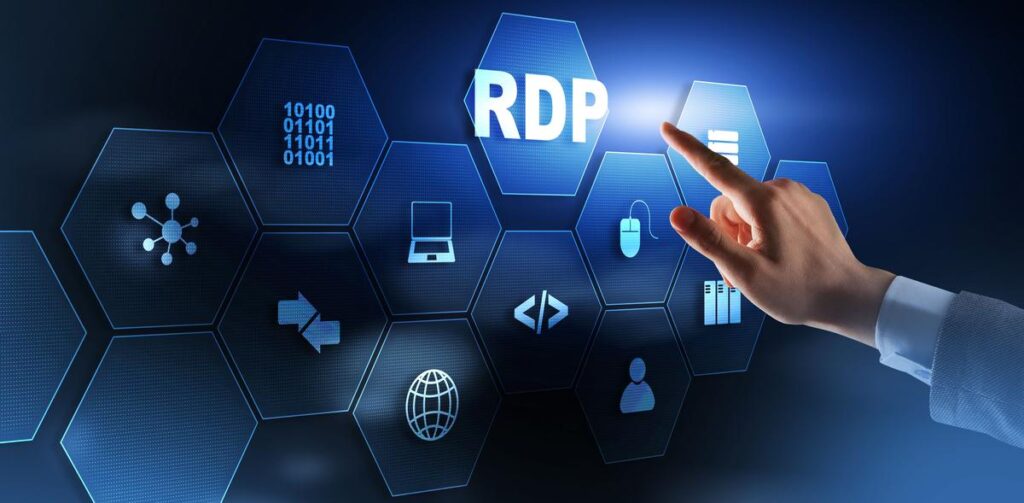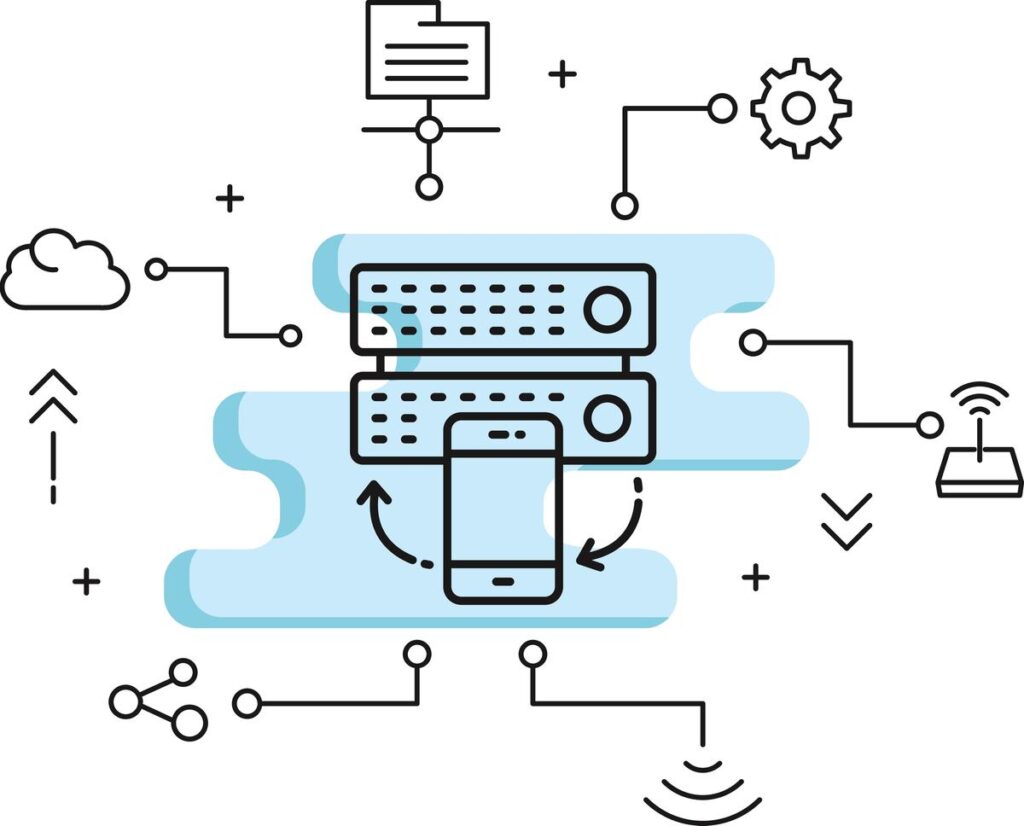
Introduction:
In today’s digital landscape, remote work has become more prevalent than ever before. With the rise of distributed teams and the need for flexible work environments, remote desktop protocol (RDP) has emerged as a crucial technology. This article explores the future of RDP, highlighting the upcoming trends, advancements, and possibilities that will shape its trajectory.
Current State of RDP
RDP, in its current state, serves as a powerful tool for accessing and controlling remote computers or virtual machines. It enables users to connect to a host computer from a remote location, providing access to files, applications, and resources. RDP has found wide application in various industries, including IT, finance, healthcare, and more.
One of the significant advantages of RDP is its ability to facilitate remote collaboration. Teams can seamlessly work together, regardless of their physical locations, fostering productivity and efficiency. Additionally, RDP offers cost savings by reducing the need for physical infrastructure and enabling organizations to leverage the skills of remote talents.
However, RDP also comes with its share of challenges. Security vulnerabilities and the potential for unauthorized access are concerns that need to be addressed. Furthermore, performance issues and compatibility limitations can arise when using RDP across different operating systems and devices.
Emerging Trends in RDP
The future of RDP looks promising, driven by several emerging trends. Firstly, the demand for remote work is continuously increasing. As companies recognize the benefits of a remote workforce, the reliance on RDP solutions will surge. This trend is further accelerated by technological advancements and the availability of high-speed internet connections.
Advancements in RDP technology are also expected to shape its future. Improved video and audio streaming capabilities, better compression algorithms, and reduced latency will enhance the remote user experience. Moreover, the integration of artificial intelligence (AI) and machine learning algorithms will enable intelligent automation, predictive maintenance, and enhanced security measures within RDP systems.
Cloud-based RDP Solutions
Cloud-based RDP solutions are gaining traction due to their scalability and flexibility. Organizations can leverage cloud infrastructure to meet their evolving needs, seamlessly scaling resources up or down as required. Additionally, cloud-based RDP reduces the burden of managing on-premises infrastructure, allowing businesses to focus on their core competencies.
The cost-effectiveness of cloud-based RDP is another compelling factor. By eliminating the need for substantial upfront investments, organizations can reduce their IT expenses. The pay-as-you-go model ensures that businesses only pay for the resources they consume, making it an attractive option for startups and small to medium-sized enterprises.
Mobile RDP and Device Integration

The proliferation of mobile devices has revolutionized the way we work. The future of RDP will see increased integration with mobile platforms, enabling users to access remote resources from their smartphones and tablets. This flexibility empowers employees to be productive on the go, enhancing work-life balance and ensuring continuity even outside traditional office environments.
Seamless integration between RDP and mobile devices will unlock new possibilities for collaboration and productivity. Workers can access their desktops, files, and applications from anywhere, enabling them to stay connected and efficient. Mobile RDP will bridge the gap between different operating systems, ensuring a consistent experience across devices.
Virtual Reality and RDP
The future of RDP holds exciting prospects with the integration of virtual reality (VR) technology. VR can provide immersive remote work experiences, allowing users to interact with their virtual desktop environments in a more natural and engaging way. This technology opens up possibilities for virtual meetings, training simulations, and design collaborations.
Despite its potential, integrating VR with RDP presents challenges. High bandwidth requirements, hardware limitations, and the need for specialized equipment pose obstacles to widespread adoption. However, as technology advances and becomes more accessible, the combination of RDP and VR has the potential to reshape the way we work and collaborate.
Artificial Intelligence in RDP
AI is making significant strides across industries, and RDP is no exception. Intelligent automation within RDP systems can streamline remote operations, reducing manual effort and enhancing efficiency. Predictive maintenance and troubleshooting capabilities can proactively identify and resolve issues, minimizing downtime and improving productivity.
Furthermore, AI-powered security measures can bolster RDP’s resilience against cyber threats. Machine learning algorithms can analyze user behavior patterns, detect anomalies, and provide real-time alerts. This proactive approach helps safeguard sensitive data and protect against unauthorized access, ensuring the privacy and integrity of remote connections.
RDP and Internet of Things (IoT)
As the IoT ecosystem expands, the integration of RDP with IoT devices offers exciting opportunities. RDP can facilitate remote management and control of IoT devices, enabling businesses to monitor and interact with their connected assets from anywhere. This integration enhances efficiency, reduces operational costs, and enables real-time decision-making.
With RDP and IoT working together, organizations can leverage the power of data collected by IoT devices to optimize processes, improve productivity, and deliver enhanced customer experiences. From remote equipment maintenance to smart home automation, the possibilities are vast and transformative.
RDP and Data Privacy
Ensuring data privacy is paramount, particularly in remote work scenarios. RDP implementations must adhere to stringent security protocols and encryption standards to safeguard sensitive information. Data transmitted through RDP connections should be encrypted, protecting it from interception and unauthorized access.
Organizations must also comply with relevant data protection regulations, such as GDPR or CCPA, when using RDP solutions. Implementing secure access controls, multi-factor authentication, and regular security audits can help mitigate risks and ensure compliance.
Future Challenges and Opportunities
As RDP evolves, several challenges and opportunities lie ahead. The evolving cyber threat landscape demands continuous vigilance to address potential vulnerabilities. RDP developers must invest in robust security measures, regular updates, and user education to stay ahead of emerging threats.
Innovation will play a vital role in shaping the future of RDP. Advancements in technology, such as quantum computing or 5G networks, may influence the capabilities and performance of RDP solutions. Additionally, the acceptance and adoption of RDP in various industries will determine its widespread usage and impact.
Conclusion
The future of RDP is promising, driven by emerging trends and technological advancements. Cloud-based solutions, mobile integration, virtual reality, AI, IoT, and data privacy enhancements will shape the way we leverage RDP in remote work scenarios. As organizations embrace the benefits of remote work and seek efficient collaboration solutions, RDP will continue to play a pivotal role in enabling connectivity, productivity, and flexibility.
FAQs
- What is RDP?
Remote Desktop Protocol (RDP) is a technology that allows users to connect to and control remote computers or virtual machines over a network, enabling access to resources, applications, and files. - How does RDP benefit remote work?
RDP enables seamless remote collaboration, allowing distributed teams to work together efficiently. It also offers cost savings, eliminates geographical barriers, and enables access to resources from anywhere. - Can RDP be used on mobile devices?
Yes, RDP can be used on mobile devices. Mobile RDP solutions allow users to access their remote desktops, applications, and files from smartphones and tablets, providing flexibility and productivity on the go. - What are the security measures in RDP?
RDP employs encryption and secure protocols to protect data transmitted over remote connections. Implementing strong access controls, multi-factor authentication, and regular security audits enhances security. - Will RDP replace traditional office setups?
While RDP offers flexibility and productivity benefits, it may not completely replace traditional office setups. However, RDP will continue to play a crucial role in enabling remote work and facilitating collaboration in the future.